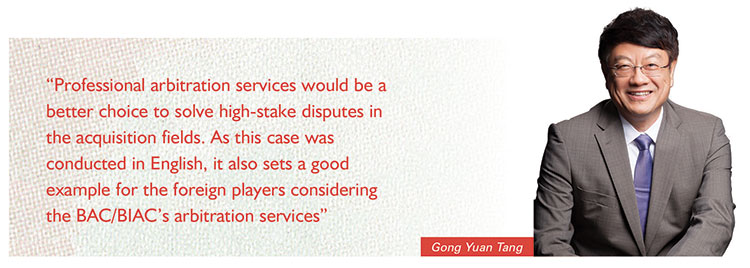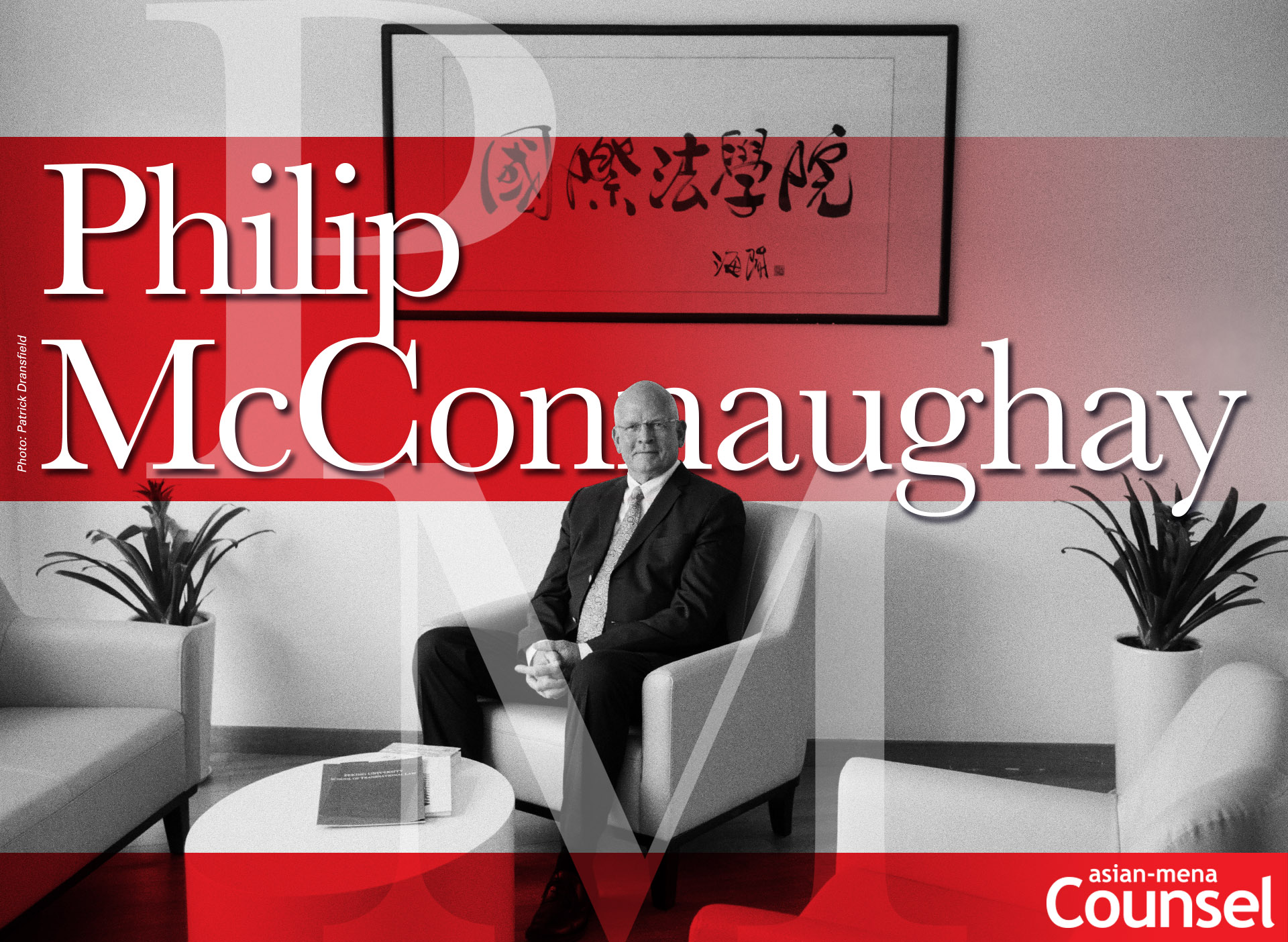Using a recent case study, Gong Yuan Tang, Arbitrator of the Beijing Arbitration Commission, demonstrates how there is often more to take into consideration when trying to achieve the proper result than it first seems.
When a party allegedly breaches a non-competition agreement, what pieces of evidence become sufficient enough to establish competitive business activities? And, if indeed such competitive activities were found, what is the adequate amount of damages that should be awarded to the aggrieved party when actual monetary loss is uncertain?
In a contract dispute heard by the tribunal of the Beijing Arbitration Commission/Beijing International Arbitration Center (BAC/BIAC), the parties involved had entered into a non-competition agreement as part of a purchase and sale transaction in which the buyer agreed to acquire the seller’s company. In the non-competition agreement (the Agreement), the seller agreed not to engage in any competitive business activities against the buyer for a period of 20 years.
The buyer brought the case to the BAC claiming that subsequent to the close of the transaction, the seller failed to abide by the terms of the Agreement by deliberately engaging in a series of correlated activities that competed with the buyer’s business. The buyer requested the tribunal to award the buyer damages of more than RMB20 million for the seller’s breach. Conversely, the seller denied any direct involvement in these alleged activities and argued even so that these actions neither rose the level of competition against the buyer’s business nor took away from the buyer’s bottom line.
The tribunal, in making its determination as to whether to grant the buyer’s request for liquidated damages, had two major dilemmas to resolve: in order for the buyer to substantiate its claim, the tribunal had to determine whether the buyer has brought forth sufficient evidence to tie the seller to these competitive activities and in turn, if the seller did engage in these activities. The tribunal also had to determine whether the seller’s activities caused the buyer damages and the extent of these damages.
Bringing together the evidence
Bringing together the pieces of evidence that the buyer brought forth, the tribunal used a preponderance of the evidence standard to determine whether the seller was personally involved in these activities. As such, if it is found that the seller more likely than not engaged in these activities, then the seller will have breached the non-competition agreement, and the buyer would be entitled to damages.
The buyer submitted as evidence certain marketing materials that were distributed at a tradeshow. The marketing materials revealed the seller as the founder and chairman of various business entities. Additionally, the buyer introduced into evidence that the seller had recently registered several domain names, which indicates intent and planning to start a business. The seller vehemently maintained that he had no personal involvement with the business entities being promoted at the tradeshow, as his family members established these entities, and that he did not register the domain names which appeared to have been a clerical error.
Looking at the chain of evidence provided by the buyer, the tribunal deliberated on the issue of whether the seller was indeed personally involved in these activities. The arbitrators agreed on the point that though direct evidence was lacking in this case, circumstantial evidence pointed to the seller being personally involved in these undertakings, and these ‘coincidences’ taken in the aggregate indeed tie the seller to these activities in which he claimed no personal involvement.
Furthermore, the buyer also introduced into evidence the seller’s social media accounts. On these accounts, it shows the seller to be operating an online store, which was selling various products and services similar to those marketed and sold by the buyer. The buyer also introduced into evidence that the seller had applied for certain trademarks that were substantially similar to that of the buyer’s business.
As such, despite the seller’s rebuttal that his online store had little or no revenue at all and that the application of the trademarks was still pending approval, these activities nonetheless are in direct competition with the buyer’s business. The tribunal held that it was irrelevant that the seller’s business had no meaningful revenue stream or that the trademarks were yet to be approved; it was these acts in themselves that constituted competitive business activities against the buyer. Therefore, the seller indeed breached the non-competition agreement.
 Awarding adequate damages Once the tribunal determined that the seller had in fact breached by engaging in competitive activities prohibited by the non-compete agreement, the tribunal then had to decide the proper amount of damages that should be awarded to the buyer.In determining the proper damages amount, the tribunal had to take into account that in spite of the fact that the seller’s aforementioned activities constituted competitive activities against the buyer’s business, there appears to be no substantiated damages suffered by the buyer in terms of lost revenue and lost profits. Here, the adequate amount of damages seemed uncertain given that the tribunal did not want to overcompensate the buyer because the seller did not cause significant monetary loss to the buyer, but at the same time, the tribunal did not want to undercompensate the buyer because the seller clearly breached the terms of the non-compete agreement. The tribunal deliberated extensively on the damages issue. What was difficult in granting damages here was the fact that buyer suffered no definitive monetary damages as caused by the seller. Whereas the buyer claimed that the company’s weakening revenue stream and declining bottom line was caused directly by the seller’s competing business activities, there was no actual proof that the seller’s competing activities were the actual cause of the buyer’s poor performance. In fact, the buyer’s declining business could be attributed to a variety of other contributing factors, whether it is industry specific or on a more macroeconomic level. Therefore, even though the non-competition agreement explicitly stated that the seller would be liable for damages amounting to 50 percent of the company’s revenue in the year preceding the claim if the seller was to violate the terms of the agreement, the tribunal also took into consideration Article 114 of the Contract Law of the PRC, which in part states that if the breach of contract damages are excessively higher than the losses incurred, any party may request an arbitration institution to make an appropriate reduction. As such, the tribunal had to find a proper balance in awarding an appropriate amount in damages to the buyer. Ultimately, after much deliberation, the tribunal found that when the liquidated damages provision overcompensates the buyer relative to the actual injury suffered by the buyer as seen here, the liquidated damages clause is to be perceived as providing excessive compensation in the nature of a penalty rather than actual losses incurred by the buyer. Therefore, in the interest of equity, the tribunal had the proper justification to make the appropriate reduction that would be reasonable and equitable to both parties involved. Further still, the seller should nonetheless be reprimanded for intentionally breaching the terms of the Agreement, being fully aware that he was prohibited from engaging in such competitive activities. Thus, the tribunal awarded the buyer 10 percent of its initial damages request, both to serve as a damages award to the buyer and to caution the seller from engaging in any further competing activities. Conclusion –––––––– |



















